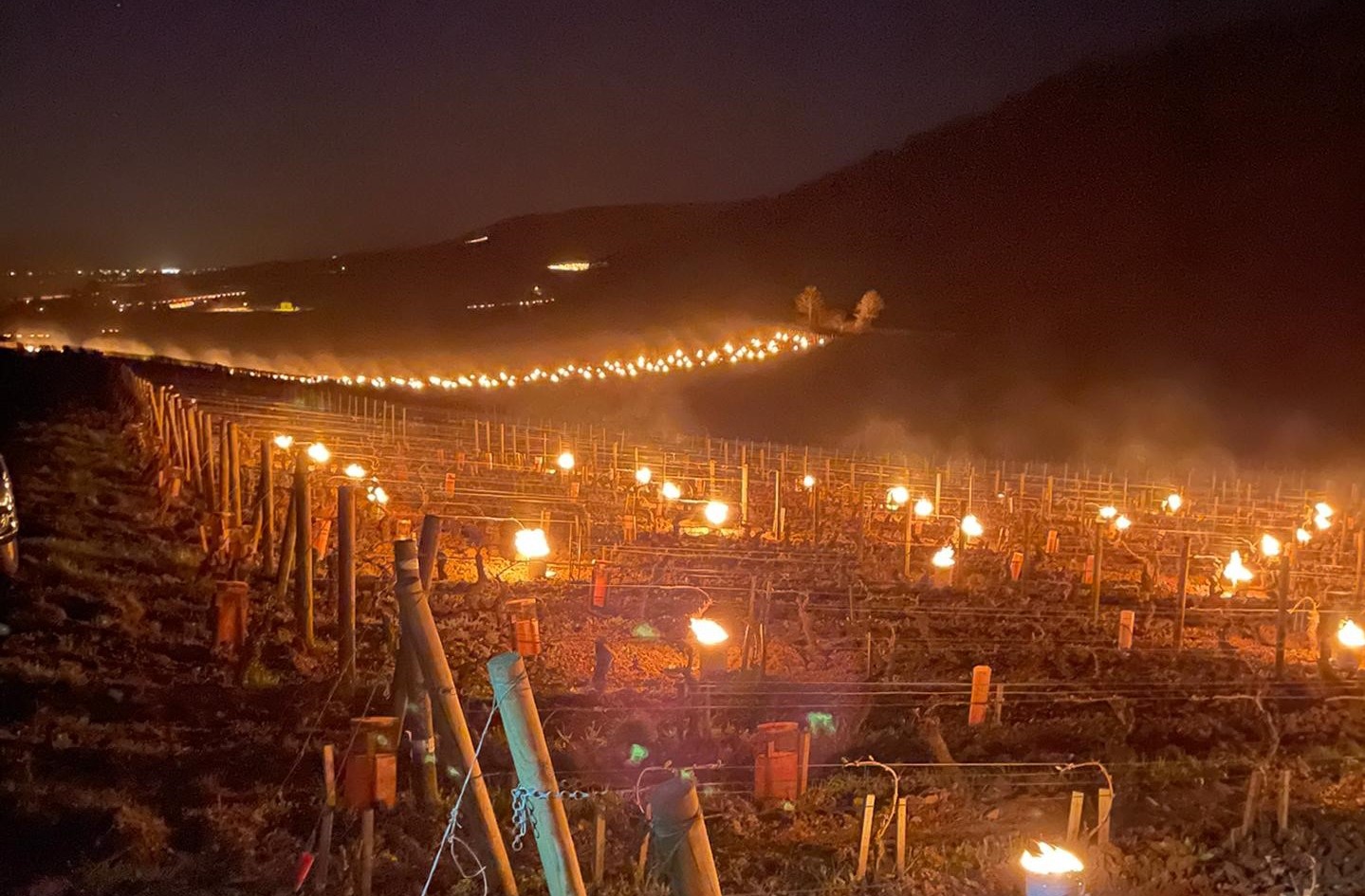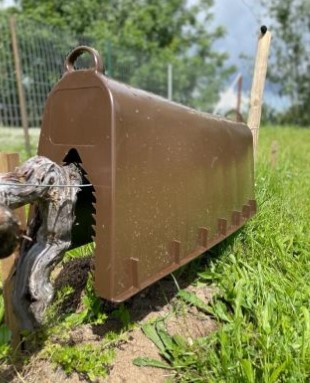How to protect vines from frost?
Spring is the season when vines wake up, and the first leaves and buds appear. However, climatic hazards such as frost can weaken your vines and destroy your harvest, as temperatures are still generally negative at this time of year. So you need to be prepared to fight spring frost and limit the damage. This period sometimes lasts several successive nights.
Frost protection solutions
To combat frost effectively, we need to warm the atmosphere near the vines and raise temperatures above the freezing point. There are various solutions to combat spring frost:
Anti-frost candles:
Installed between the rows of vines, we light anti-freeze candles before dawn for several hours. They warm the air and are effective down to -6°C.
Made from recycled kerosene contained in metal containers, usually 5 liters in size, anti-freeze candles burn out in an average of 8 hours. This time may vary according to climatic conditions.
They are very easy to use: just place the candles in the vineyard, around 250 to 400 candles per hectare depending on the intensity of the frost, and light them using a burner or a torch. More precisely, we generally install a candle every 7m, every other row.
Remember to leave the cover nearby so you can extinguish the candle if necessary, and reuse it on another cold night.
As an economical solution, there are also so-called anti-freeze candle refills. These come in a cylinder-shaped cardboard box, and can be placed directly in a 5L metal container (minimum diameter 17 cm, height 24 cm). All that's left to do is light the wick.

Anti-frost bells:
This new product (awarded the VITEFF 2023 innovation prize) protects your vines from frost in an economical, ecological and sustainable way. The anti-frost bells are positioned on each vine to be protected and can be adapted to each type of vine. The dimensions of the cloches are designed to allow bud break without any problem during the protection period. Once the frost period is over, all you have to do is remove the the frost-proof clochesand store them for the following year.

Heaters:
Like anti-freeze candles, heaters are placed between the rows of vines to warm the atmosphere near the vines by a few degrees. When switched on, the temperature gain of heaters is significantly higher than that of candles.
On the other hand, installation is more labor-intensive: first of all, you need to lay out the heaters, then the fuel during the night (wood, pellets, production waste). You also need to anticipate periods of frost.
Sprinkling:
Sprinkling consists of spraying the vines with water, so that the buds are caught in an ice pocket without the water they contain freezing.
This can be a very effective solution, but it's just as tricky, as the vines have to be watered until the temperature rises above 0°C again. This solution is very expensive because of the cost of hoses and sprinklers.
Heating cables:
Fixed along the binder wire, they are connected to a control cabinet that heats the contact zone. Installed several months before the spring freeze-up, they have a long autonomy.
The investment involved in installing these heating cables is substantial, and they are generally used for small plots close to villages, as access to electricity is essential.
Wind turbines and helicopters:
This solution is used to stir the air and prevent frost forming on the vines. It's also a very expensive solution, but seems to be effective on large plots.
What are the consequences of frost on vines?
The onset of spring, especially after a mild winter, heralds the arrival of the first frosts, which are particularly feared by wine and fruit growers. Indeed, frost can wreak havoc, with varying degrees of severity depending on the year.
Frost is to be feared once the buds have emerged, known as budburst. Vines are not sensitive to winter frost, as they are in a state of vegetative rest. The more advanced the vine's cycle, the greater the danger of frost.
If the bud is burnt by frost, it will turn brown and wither, so it won't produce grapes that year.
How can we anticipate the risk of frost?
Choosing the right grape variety, pruning and working the soil can improve vine conditions.
Depending on the region, winegrowers will choose a grape variety that is more or less sensitive to climatic conditions. Some grape varieties, such as Riesling, are better suited to colder regions, as they bud later.
Winegrowers can also delay pruning in order to postpone the vegetative cycle and bud break.
The soil can also be tilled to prevent moisture from settling in and causing temperatures to fall. For example, avoid ploughing the soil before a frost event.
What are the different types of frost?
There are 2 main types of frost: radiative frost and advective frost.
- Radiative frost corresponds to heat loss at ground level, accumulated during the day. Warm air rises, and the denser, heavier cold air accumulates at ground level. This phenomenon generally occurs on a clear day with little or no wind speed. Depending on the dew point temperature, we speak of black frost (<2.2°C, dry weather) or white frost (>2.2°C, wet weather).
- Advective frost is the arrival of cold air with a sometimes strong wind.
What to do after a spring frost?
After a frost episode, vines remain in a state of shock for several weeks. Winegrowers will be able to estimate the extent of the damage as soon as the vines start to grow again, and the damage may be partial or total. Total crop loss is defined as 60% or more of the vine affected.
If the damage is less than 40%, disbudding (which consists in eliminating superfluous or destroyed buds) is essential to promote the following year's pruning and aerate the foliage.
E-Viti offers a range of products to limit winter frost damage.



